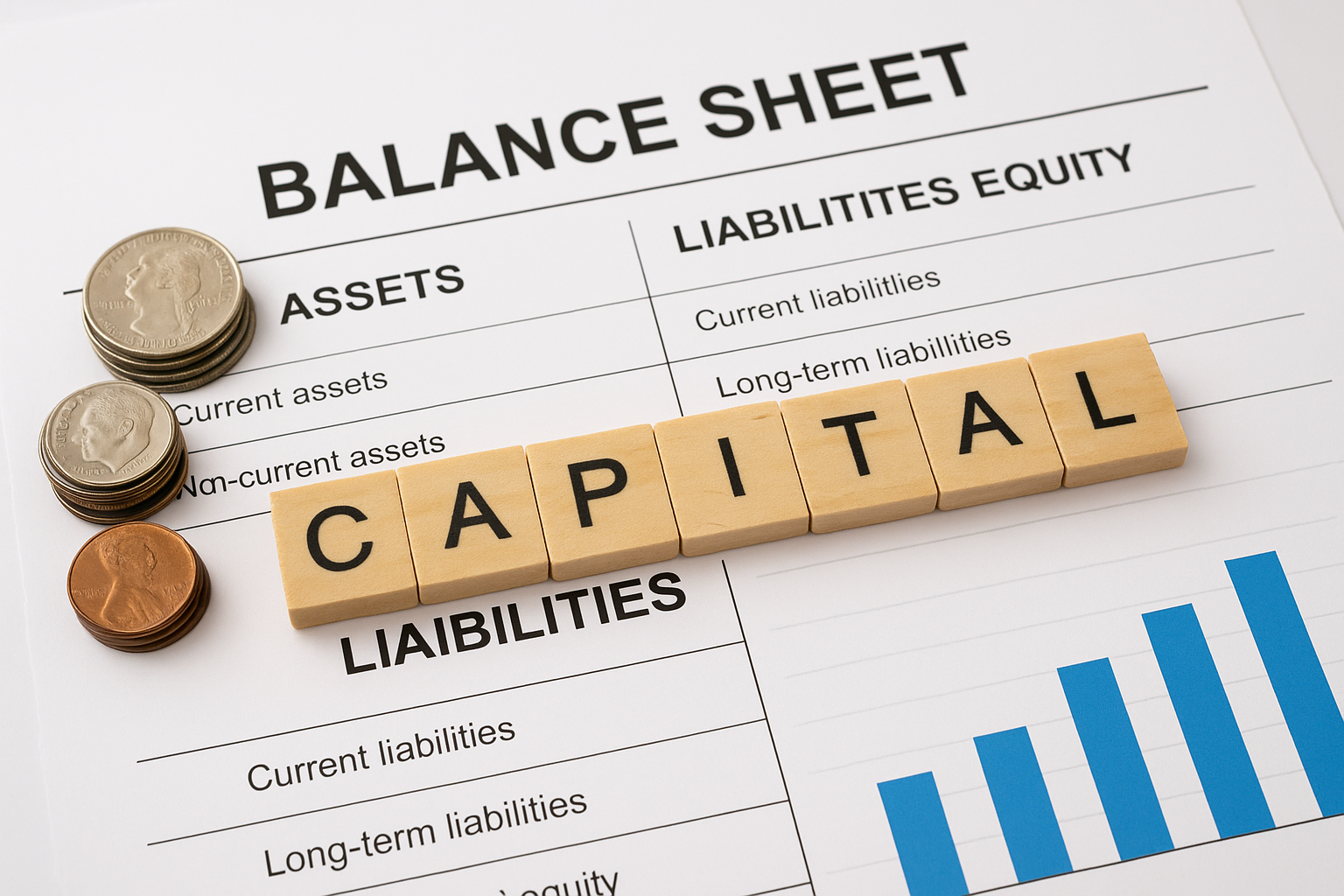Introduction
The Silent Power of Capital Structure: What Your Balance Sheet Says About You. Capital structure refers to the mix of debt and equity that a company uses to finance its operations and growth. While it may seem like a dry financial concept, capital structure plays a powerful role in determining a company’s risk profile, cost of capital, valuation, and overall financial health. It is the hidden language of a balance sheet that speaks volumes about how a company is managed and perceived by investors, creditors, and stakeholders.
In this blog, we explore the strategic implications of capital structure, why it matters, and how the choices made in structuring finance silently influence a company’s trajectory.
Table of Contents
What is Capital Structure?
At its core, capital structure is the proportion of debt and equity a company uses to finance its assets. A typical structure might include:
- Equity Capital: Funds raised from shareholders through common or preferred stock.
- Debt Capital: Borrowed funds including loans, bonds, or other forms of credit.
- Hybrid Instruments: Instruments like convertible bonds or preferred shares that have features of both debt and equity.
The mix of these elements is not arbitrary. It reflects the company’s strategy, industry norms, and market conditions.
Learn more about capital structure components from Investopedia’s Capital Structure Guide.
Why Capital Structure Matters
The structure of a company’s capital influences many critical aspects of its financial standing:
- Cost of Capital: A firm’s weighted average cost of capital (WACC) is directly tied to its capital structure. Excessive debt may lower WACC initially but increase risk over time.
- Financial Flexibility: Companies with balanced structures can raise funds more easily and at better terms.
- Risk Profile: High levels of debt introduce financial risk due to fixed interest obligations, especially during downturns.
- Investor Perception: A firm’s leverage affects how it is viewed by equity investors, creditors, and rating agencies.
Debt vs Equity: The Trade-Off
Choosing between debt and equity is a strategic decision:
- Debt Advantages:
- Tax benefits (interest is tax-deductible)
- No dilution of ownership
- Encourages discipline in cash flow management
- Debt Disadvantages:
- Interest obligations increase risk
- May limit future borrowing
- Can lead to insolvency during downturns
- Equity Advantages:
- No obligation to repay investors
- More flexibility in financial planning
- Equity Disadvantages:
- Dilution of ownership
- Costlier than debt in terms of expected returns
The right balance varies based on industry, market conditions, and company goals.
How Capital Structure Shapes the Balance Sheet
The balance sheet is a snapshot of a firm’s financial position, and its structure reveals critical insights:
- Leverage Ratio: Debt-to-equity (D/E) shows how aggressively a firm is financed. A high ratio might indicate risk but also growth ambition.
- Interest Coverage: Indicates a company’s ability to pay interest using its earnings.
- Asset Base: How assets are financed (debt or equity) speaks volumes about capital intensity and operational stability.
For example, a tech startup may have low debt and high equity to fund innovation, while a utility company may rely more on debt due to predictable cash flows.
Industry Benchmarks and Best Practices
Capital structure norms vary widely by industry. For instance:
- Technology: Favor equity due to volatility and need for innovation.
- Manufacturing: Balanced structure to finance capital-intensive operations.
- Financial Services: High leverage is normal but closely regulated.
For sector-specific capital structure benchmarks, refer to this resource: Corporate Finance Institute: Capital Structure by Industry
Case Study: Tesla vs Ford
Let’s compare the capital structure of Tesla and Ford:
- Tesla: Early in its growth phase, Tesla relied heavily on equity funding. This helped the company avoid excessive debt while focusing on innovation and scale.
- Ford: As a legacy automaker, Ford uses a balanced structure, maintaining significant debt levels due to stable cash flows and capital requirements.
Their differing capital structures reflect their unique positions and strategies. Investors read into these figures to understand risk, growth potential, and financial strategy.
Adjusting Capital Structure Over Time
Capital structure isn’t static. Companies often adjust it based on:
- Market Conditions: Favorable interest rates may prompt issuing debt.
- Strategic Goals: M&A activity, expansion, or R&D may shift financing needs.
- Performance Metrics: Changing profitability, cash flows, or stock performance can influence funding preferences.
Restructuring, share buybacks, issuing bonds, or equity dilution are all common tools used to modify capital structure.
Signals Capital Structure Sends to Stakeholders
- To Investors: Stability, growth potential, or risk levels.
- To Creditors: Creditworthiness and likelihood of repayment.
- To Competitors: Financial health and strategic intent.
- To Employees: Company’s commitment to growth and innovation.
A lean capital structure may signal conservative management, while a highly leveraged firm might be viewed as aggressive or opportunistic.
Conclusion
Capital structure is more than a financial formula. It’s a strategic lever that silently yet powerfully shapes a company’s identity, growth, and resilience. The balance sheet is a reflection of these choices, narrating a story to those who know how to read it.
Understanding what your balance sheet says about you can help guide smarter decisions, build investor confidence, and align your financial strategy with long-term business goals. Ultimately, mastering the silent power of capital structure is a must for every corporate leader and finance professional.
Further Reading:
Find more Finance content at:
https://allinsightlab.com/category/finance/

